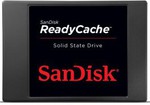Cheapest on statice is $50, ebay & amazon are also more expensive than $25
Although the Weekend Super sale officially starts tomorrow, it can be added to cart now at the reduced price:
http://www.msy.com.au/images/ADbanner/eletter/25032014/onlin…
Enjoy
Edit: Deal is active now, confirmed by MSY rep.


Would this be good for storing the OS for my future gaming pc?